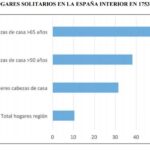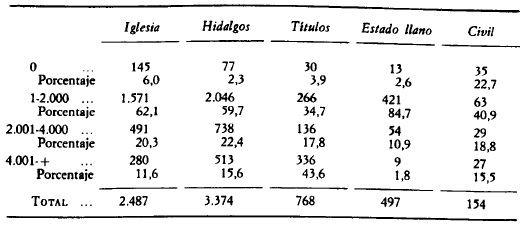Headship has always been a subject of attention in social science. It determines family patterns, behaviour and policies. In the Spain of 1753, we can see how, in general, women were the head of the family under the parameters of widowhood. From the age of 50 onwards, there was an increase in single-person households headed by women, an upward trend that continued after the age of 65. With the departure of the children from the family and the death of the husband, the woman found her authority in herself, showing more preference for loneliness than for remarriage as long as she could support herself economically.
Collection: Graphics
Project: 3. Rural world and urban world in the formation of the European identity., 4. Family, daily life and social inequality in Europe.
Chronology: XVIII
Scope: Secondary Education, Baccalaureate, University
Link: https://e-revistas.uc3m.es/index.php/REVHISTO/article/view/3697/2303
Resource type: Graph
Format: Bar chart
Source: García González, F. (2017) “Mujeres al frente de sus hogares. Soledad y mundo rural en la España interior del Antiguo Régimen”, en Revista de Historiografía, nº 26, p. 38.
Language: Spanish
Date: 2017
Owner: Pablo Ballesta Fernández (Modernalia)
Copyright: © Instituto de Historiografía "Julio Caro Baroja" de la Universidad Carlos III ©Francisco García González ©Seminario de Historia Social de la Población
Abstract: Loneliness and family behaviours, especially linked to women, which conditioned life in inland Spain
Image
Tags







